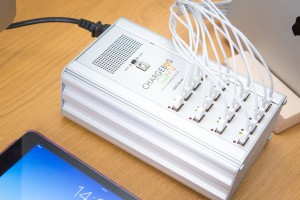Apple sells their iPad charger for $19, while you can buy an iPad charger on eBay for about $3. From the outside, the chargers look the same. Is there a difference besides the price? In this article, I look inside real and counterfeit chargers and find that the genuine charger has much better construction, power quality, and most importantly safety. The counterfeit turns out to be a 5 watt charger in disguise, half the power of a genuine charger.
Stay safe people and don’t buy knock-off iPad chargers.
Safety probably isn’t something you think about when you plug in your charger, but it’s important. Inside the charger is 170 volts or more with very little separating it from your iPad and you. If something goes wrong, the charger can burn up, injure you, or even killyou. Devices such as chargers have strict safety standards – if you get a charger from a reputable manufacturer. If you buy a cheap counterfeit charger, these safety standards are ignored.
…
The UL regulations require safe separation between the high voltage and the low voltage. This is measured by creepage – the distance between them along the circuit board, and clearance – the distance between them through air. The regulations are complex, but in general there should be at least 4mm between high-voltage circuitry and low-voltage circuitry.
…
The creepage distance on the counterfeit charger board below is scary – only 0.6 mm separation between low and high voltage.
Sounds dangerous! All of onefruit’s Chargebus products meet these UL regulations. Don’t be conned by these cheap chargers.


